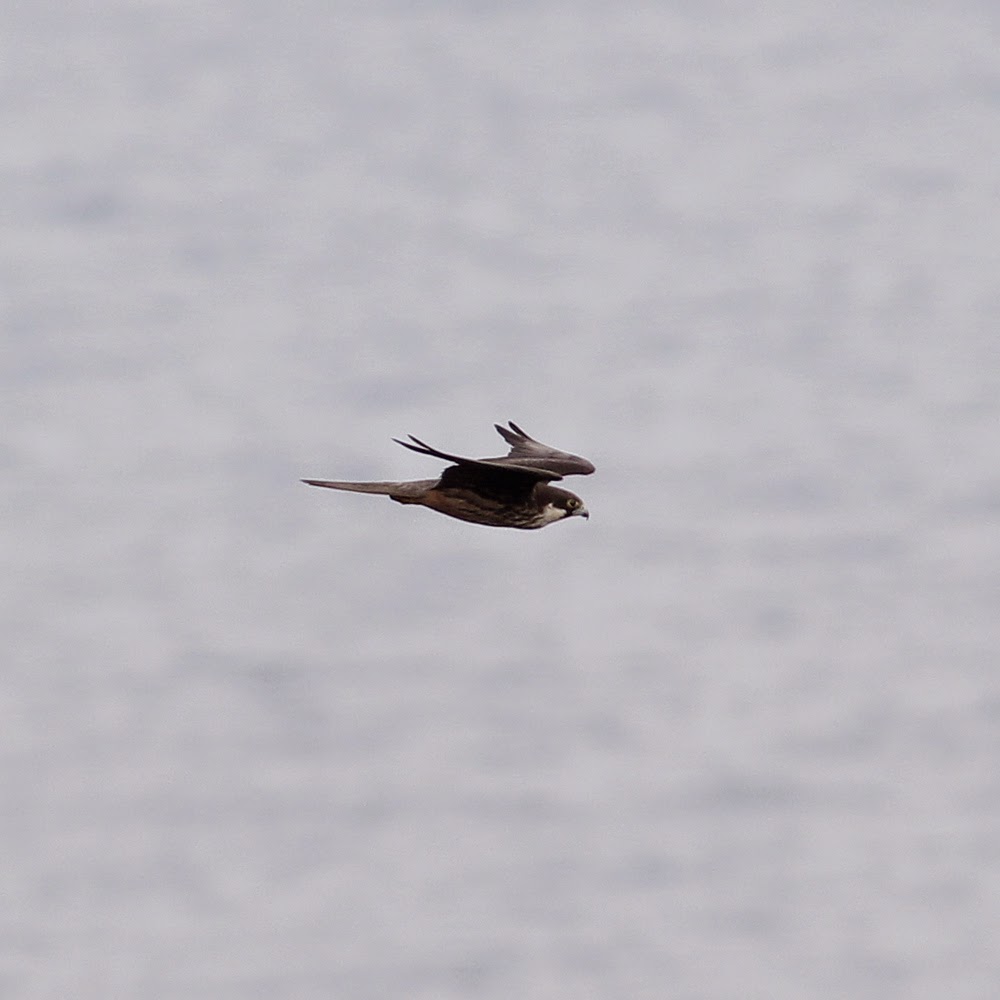There were no great surprises at Fluke Hall this morning; unless you count a couple of strange birders - it must be October and Yellow-browed Warbler time. The major surprise was to arrive later in the day while catching a few more Goldfinches in the garden.
I was hoping for some Whooper Swans along Pilling shore but instead found 2 Ruff feeding on the wildfowler’s pool amongst 40 or so Shelduck. Ten minutes later Whooper Swans appeared, nine of them flying in from the outer marsh and continuing south, the first of the autumn and fresh-in from Iceland. About thirty minutes later another four Whoopers appeared from the North East and then circled about before landing somewhere just inland.
Whooper Swan
There was a jellyfish along last night’s tideline, such a good example that I took a picture.
Jellyfish
The farmers were busy sheep shearing where I next wanted to look so after a single Grey Heron and a couple of Little Egrets I abandoned that idea and instead spent time near the wildflowers’ stubble field and pools. The stubble is pretty good with 70+ Skylark, 25 Linnet, 6 Meadow Pipit, 1 Snipe, a couple of Redshank and 1500 roving Starlings.
The pool proved not so good with Shelduck flying in in but not staying, 4 Reed Buntings around the perimeter and small numbers of Meadow Pipits in-off the marsh.
In the woodland - Two Buzzards, 2 Great-spotted Woodpeckers and 3 Jays, plus an overflying Sparrowhawk. There’s a huge crop of beech mast this year and it lines the road and crunches underfoot when walking through the lane. A few Chaffinch and Great Tits took advantage of the harvest but otherwise I couldn’t even find a Brambling and certainly not a Yellow-browed Warbler.
Back home, and to add to eleven of a day or two ago, I caught another 8 Goldfinches from the flock of 50+ that’s in the neighbourhood, 2 more Greenfinch and a Robin. One of the Goldfinches was so young it wasn’t possible to ascertain the sex, but from the wing length and bill size a likely male. This plumage in October suggests it is one of a very late brood of September.
Goldfinch - adult male
Goldfinch - juvenile
First winter Robin
Robin
Next was a bird I’ve never seen in the garden in almost fifteen years of living here, a Nuthatch, not just one but a male and a female in a net which had interrupted their flight line from the niger feeders. A very nice but also unexpected surprise as the species breeds uncommonly in this area.
Nuthatch
Nuthatch
I thought back to earlier in the week when there was a Nuthatch at Fluke Hall, not a breeding site for the species but where Nuthatches occur infrequently in the spring, autumn or winter. It made me wonder if Nuthatches may be undergoing one of their periodic irruptions.
An irruption is a dramatic, irregular migration of large numbers of birds to areas where they aren’t typically found, possibly at a great distance from their normal ranges. Depending on the species, irruptions may occur in cycles from 2-10 years, or they may be much more unpredictable.
Several factors can lead to irruptive years for different birds. The most common cause is a lack of food in the birds’ normal wintering grounds; famine can force large numbers of birds to seek more plentiful habitats until seeds, flowers and insects return in the spring. Birds that feed on the seeds and catkins of birch, maple, pine, spruce and hemlock trees often irrupt when those types of trees have poor seed crops.
Other causes for bird irruptions include unduly harsh cold or severe weather that may force birds to find more temperate wintering grounds, or overbreeding that may further deplete even plentiful food supplies. No matter what the cause of the irruption, however, it is difficult to predict where or when irrupting species may appear.
Log in to Another Bird Blog soon where there will be more tales of the expected and maybe even the unexpected.
Linking today to Anni's Blog and Eileen's Saturday Blog.
Linking today to Anni's Blog and Eileen's Saturday Blog.

























































.jpg)














